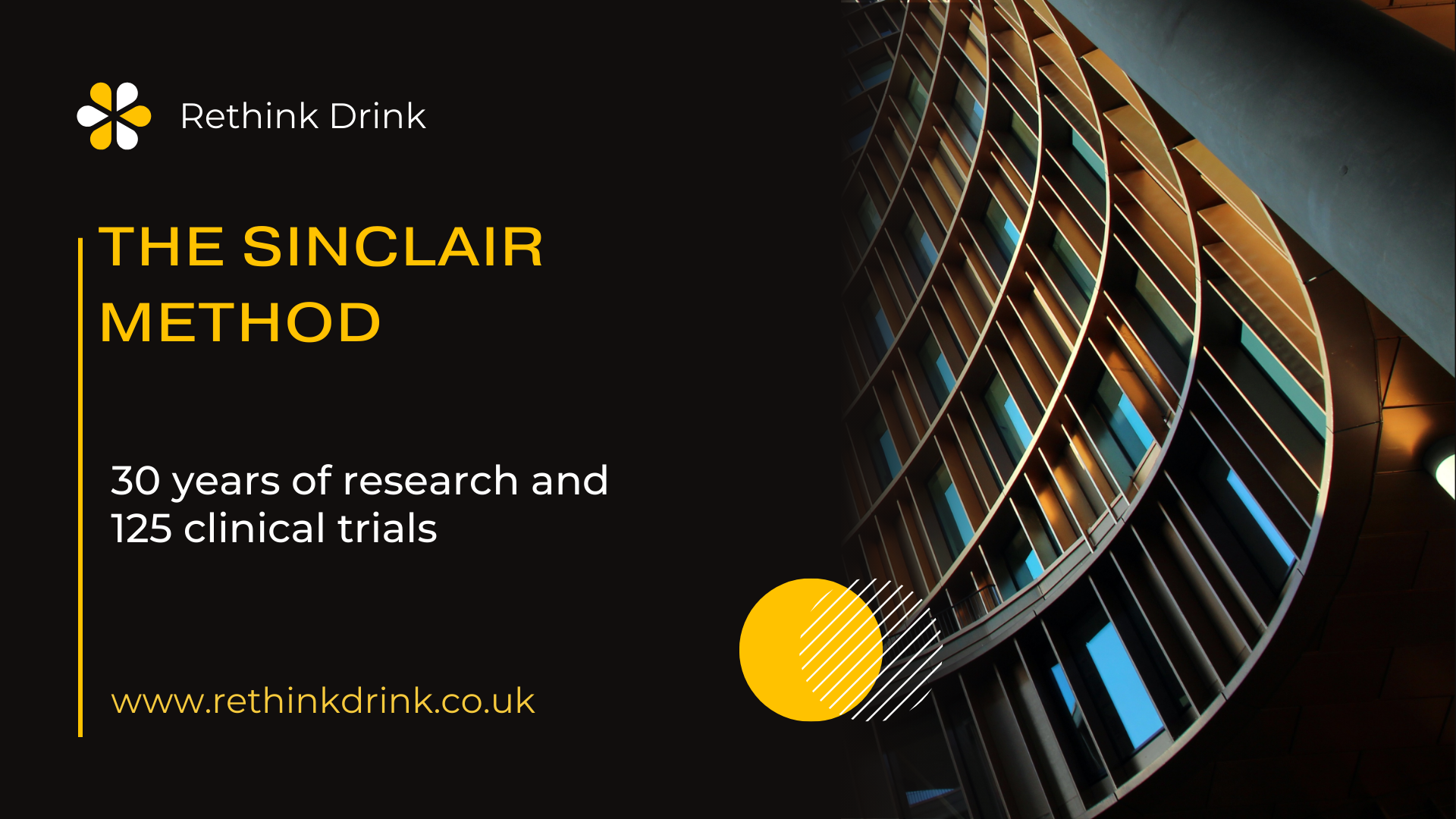
The Sinclair Method (TSM): History, Research, and Clinical Trials
Key Takeaways
The Sinclair Method (TSM) is a science-backed approach to reducing alcohol dependence using Naltrexone.
It was developed by Dr David Sinclair after decades of research into alcohol addiction and brain chemistry.
Clinical trials and studies have consistently shown its effectiveness in reducing alcohol consumption.
TSM works through pharmacological extinction, breaking the cycle of alcohol-related reinforcement in the brain.
More people are turning to TSM coaching and support to successfully implement the method.

What Is The Sinclair Method (TSM)?
The Sinclair Method (TSM) is a medically supported approach to reducing alcohol dependence through the use of Naltrexone, an opioid antagonist that blocks the pleasurable effects of alcohol. Unlike traditional abstinence-based models, TSM allows individuals to continue drinking while rewiring their brain’s reward system over time.
This process is known as pharmacological extinction, where cravings naturally diminish as the brain stops associating alcohol with reward.
If you’re interested in a structured, science-backed approach to overcoming alcohol dependence, you can explore our Free Screening Call to see if The Sinclair Method would work for you.
The History of The Sinclair Method
TSM was pioneered by Dr David Sinclair, an American neuroscientist who spent much of his career studying alcohol addiction in Finland. His breakthrough came after recognising that addiction is not simply a matter of willpower but is reinforced by operant conditioning—a process where behaviours are strengthened through repeated reward.
Dr Sinclair’s research led to the discovery that by using opioid antagonists like Naltrexone, individuals could gradually lose their urge to drink. His work was first introduced in the 1990s and gained wider recognition after being featured in Claudia Christian’s TEDx talk and her documentary, One Little Pill.
Key Milestones in TSM’s History
1960s – Dr Sinclair begins researching alcohol addiction and reinforcement mechanisms.
1970s – Early studies in animal models show Naltrexone reduces alcohol-seeking behaviour.
1990s – Sinclair publishes his research, demonstrating TSM’s effectiveness in humans.
2001 – European Medicines Agency approves Naltrexone for alcohol dependence.
2010s – Growing awareness through books, documentaries, and advocacy groups.
Present – TSM continues to gain traction as an alternative to traditional rehab models.
The Research Behind TSM
The effectiveness of TSM is backed by decades of scientific research. Studies have shown that when Naltrexone is taken before drinking, it disrupts the brain’s reward system, reducing cravings and consumption over time.
Key Findings from Research Studies
A 2001 study published in the Journal of Clinical Psychopharmacology found that 78% of participants reduced their drinking with TSM.
A meta-analysis of 50 studies confirmed that opioid antagonists like Naltrexone are significantly more effective than placebos in reducing alcohol consumption.
Finnish researchers reported a 60% reduction in alcohol intake among those using TSM compared to traditional abstinence-based methods.
These findings challenge the idea that total abstinence is the only way to recover from Alcohol Use Disorder (AUD), offering hope to those who struggle with relapse in conventional rehab settings.
Clinical Trials on The Sinclair Method
Several clinical trials have explored the impact of Naltrexone-based treatment for alcohol use disorder.
Notable Clinical Trials on TSM
Sinclair et al., 2001 – 78% success rate in reducing alcohol consumption.
Kranzler et al., 2003 – Naltrexone reduces heavy drinking days by up to 50%.
Heinälä et al., 2001 – Long-term adherence to TSM results in sustained reductions in alcohol intake.
Mann et al., 2018 – TSM significantly lowers the risk of alcohol relapse.
These trials reinforce TSM’s validity as a treatment model, paving the way for its increasing adoption worldwide.
Why More People Are Turning to TSM
Unlike traditional rehab models that demand immediate abstinence, TSM provides a more gradual, brain-based approach to recovery. People struggling with alcohol dependence often feel trapped in cycles of relapse, but TSM offers a solution that aligns with real-world behaviour.
Benefits of TSM
✅ No requirement for total abstinence
✅ Scientifically backed with strong clinical evidence
✅ Reduces cravings over time
✅ Works with real-life drinking patterns
✅ Higher long-term success rates than willpower-based methods
Many people find coaching and support essential when starting TSM. If you're considering this approach, you can learn more on our Home Page
Final Thoughts
The Sinclair Method (TSM) represents a major shift in alcohol addiction treatment, moving away from traditional abstinence models and towards a scientific, evidence-based approach. Its success in both research and clinical trials makes it a compelling option for those looking to regain control over their drinking without the fear of relapse.
If you’re ready to explore whether TSM is right for you, book a Free Screening Call today and take the first step towards lasting change.